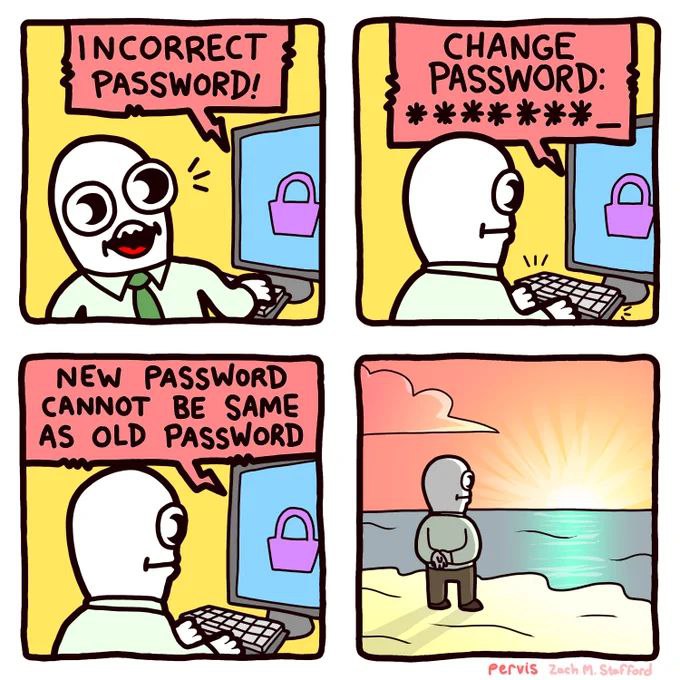this post was submitted on 23 Sep 2023
1245 points (98.2% liked)
Comic Strips
12568 readers
3768 users here now
Comic Strips is a community for those who love comic stories.
The rules are simple:
- The post can be a single image, an image gallery, or a link to a specific comic hosted on another site (the author's website, for instance).
- The comic must be a complete story.
- If it is an external link, it must be to a specific story, not to the root of the site.
- You may post comics from others or your own.
- If you are posting a comic of your own, a maximum of one per week is allowed (I know, your comics are great, but this rule helps avoid spam).
- The comic can be in any language, but if it's not in English, OP must include an English translation in the post's 'body' field (note: you don't need to select a specific language when posting a comic).
- Politeness.
- Adult content is not allowed. This community aims to be fun for people of all ages.
Web of links
- !linuxmemes@lemmy.world: "I use Arch btw"
- !memes@lemmy.world: memes (you don't say!)
founded 1 year ago
MODERATORS
you are viewing a single comment's thread
view the rest of the comments
view the rest of the comments

If they just showed the password rules on the login page, this would happen 80% less often to me.
It's so annoying to have to discover the rules one rejected attempt at a time. Worse yet: sometimes you just get vague feedback a la "password contains illegal characters". I usually let KeePassXC generate a safe password for me but in that case I then have to manually permutate the different character classes (numbers, letters, spaces, punctuation, etc) until I find the offender. No good.
Password must contain an uppercase letter.
Password must contain a special character.
Not that one.
Not that one either.
Nearly had it there! Too bad you only get 5 attempts. Account locked.
One time i hand to look up what "half width character" even was. Answer lower case
If they just showed the password on the login page, this would happen 100% less often to me.
Use a password manager. The fact you use the same password on every site is very disturbing.
KeepassXC (KeepassDX on android, I don't know what I apple option is) is a good free open source option.
iOS and macOS have a built in password generator and storage system that are encrypted. It also works with passkeys. Surprisingly, there are people (even people I’ve explained this to) who don’t use it and continue to use a single password everywhere. ¯\_(ツ)_/¯
Just use a password manager. It's super easy to get started with it and you'll only need to know one password, so make it a very good one. I'm certain yours could be brute forced, especially since I know it's now Lemmy with a "." somewhere, probably using words so throw a dictionary attack at it and it's probably easy.
How does that compare to Bitwarden?
I haven't used Bitwarden so I don't know. It's totally free though and stored locally. The only issue with this approach (which is much more secure) is there's no built in syncing between devices. It's fairly easy to do with Synchthing though so it's not an issue.
It can do everything you want a password manager can do. You can generate passwords, have notes and add other fields to entries (so you can store things like security question answers in it too, which you should generate a password for not answer with a real answer). It can connect to your browser with plug-ins for autofill/auto-generate. It has folders for grouping entries. Basically, there's no feature I can think of that would be useful that it doesn't have.
You can store it in the cloud, for example on a Google drive. Desktop KeePass has an extension that lets it use cloud storage, KeePass2Android either has cloud built in our can access Google drive via Android systems
You can, but it isn't the default. You have total control over the database is the point. You can do whatever you want with it from there.
Yep, I just thought it good to call or specifically that it works in the cloud as many users want that
It's a shame KeePass doesn't have a setting to generate an IBM mainframe password. Those rules are hard to implement in the standard set of settings
I like $ and # as chars to put as the mandatory special when the requirements are hard to find